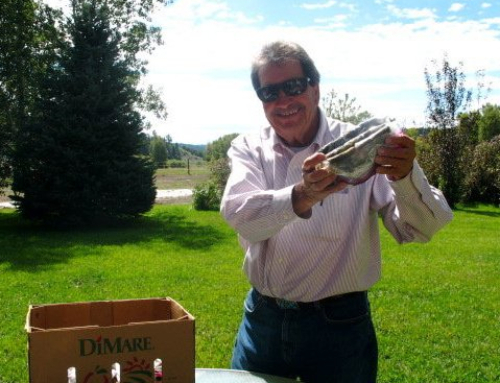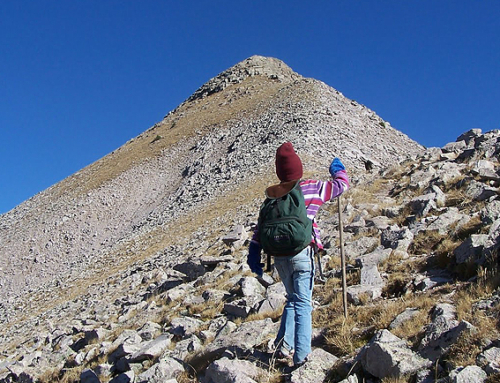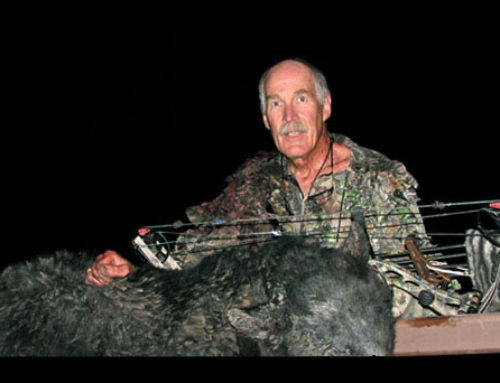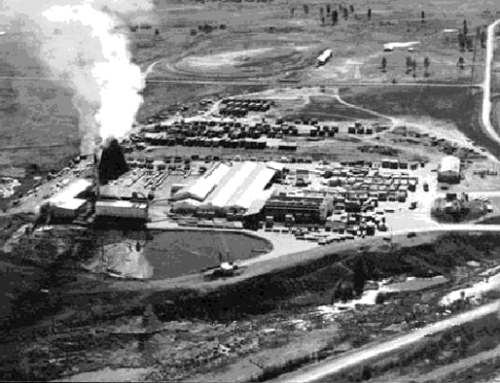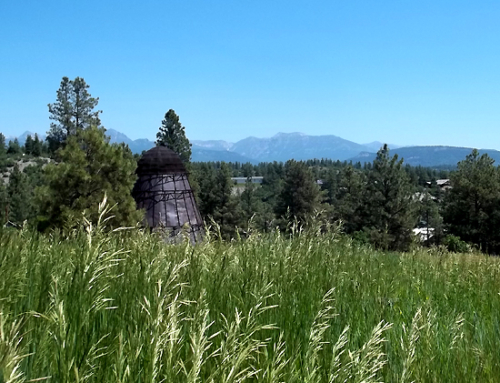Pagosa’s Most Famous Citizen: Cartoonist Fred Harman Jr.
by Norm Vance & Kate Terry
 A visitor to the Fred Harman Art Museum commented that Fred was the only cartoonist whose characters lassoed cows correctly–that other cartoonists used a trick-rope style for everything. Of course, this would not surprise anyone who knew Fred. He grew up on a ranch, worked on ranches and later owned a ranch. He was a working cowboy who created one of the world’s most popular cartoon series, Red Ryder and Little Beaver, was the producer of over 500 major oil paintings, and a founder of the Cowboy Artists of America.
A visitor to the Fred Harman Art Museum commented that Fred was the only cartoonist whose characters lassoed cows correctly–that other cartoonists used a trick-rope style for everything. Of course, this would not surprise anyone who knew Fred. He grew up on a ranch, worked on ranches and later owned a ranch. He was a working cowboy who created one of the world’s most popular cartoon series, Red Ryder and Little Beaver, was the producer of over 500 major oil paintings, and a founder of the Cowboy Artists of America.
Besides being blessed with artistic talents, Fred had a photographic memory and total recall. He could call up any scene at will. This combination of abilities made him important to the U. S. Government at the end of WWII. They made him an intelligence agent, supplied him with fake documents and sent him behind the Iron Curtain. His assignments took him throughout the European Eastern Bloc countries ending in Italy. He produced 1,500 drawings from memory of what he had seen – the conditions of the people and of the country.
The Harman family was talented in the arts. They were actors and writers. Fred Sr. (the father of the artist) and his brother and sisters (Kos, Lilly and Dolly) ran road shows in Northern Missouri and Kansas in the 1880s. Kos once was a magician on Broadway in New York City.
Kos (Kosciusko) was the first Harman in Colorado. His cousin, Col. Sturgill, had served at Ft. Lewis (when Ft. Lewis was located in what is now Pagosa Springs). In 1882 he’d gone back to Kansas City. In 1884 he was back, bringing Kos and a Mr. Black. They had bad luck on the trail and were rescued by Indians. Kos said the first thing he remembered was some Indian woman feeding him soup. Kos returned to Kansas City in 1885 and persuaded Fred Sr. (now a young lawyer) to come back with him. They applied for homesteads. In 1900, Fred Sr. married Birdie Walker, an Ohio woman (who two years before had been painted by Charles Dana Gipson). They came to Colorado and built a cabin.
Once, after returning from a visit to St. Joseph, Missouri, Birdie discovered she was pregnant. Because she thought the medical help would be better there, she returned. So Fred Harman Jr. was born in St. Joseph on February 9, 1902, and didn’t get to Colorado until three months later. The younger Harman boys were both born in Colorado.
The Harman brothers had adjoining homesteads approximately seven miles northeast of Pagosa Springs, toward Wolf Creek Pass (now San Juan River Resort). The country was wild, and Fred’s mother nested him in a small hammock (to protect him from the rats) and hid him from the friendly Indians who would look in the windows. She was an accomplished pianist and gave piano lessons in the area.
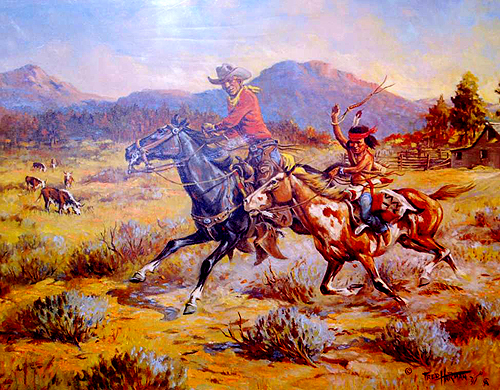
The winters were long. While growing up, Fred and his brothers, Hugh and Walker (both to become fine cartoonists), would spend the evenings copying illustrations from mail-order catalogues.
The Harmans moved back to Kansas City in 1916. Fred was 15. After a stint with the Home Guard, he came back to the homestead and hired out as a ranch hand. He was always drawing what he was seeing. He sold some of his drawings and left many others attached to bunk house walls. Having been exposed to the professional side of art on a trip back to Kansas City, he applied for a job with the Kansas City Filmad Company. Mrs. Flaugh, the mother of his best friend Bill Flaugh, delivered the telegram. He got it.
She said to him, “Why don’t you jump in the buggy, and we’ll try to catch the doctor (who’s coming by on his way to Denver).” In Denver, Fred bought new clothes, spent the night with friends and caught the next train to Kansas City–and his new job. He moved into a boarding house. Walt Disney, a fellow worker who had just started with Filmad, also lived there. They became lifelong friends. They formed a company doing animated cartoons and filming news stories. Once they set out to film the first American Legion Convention in Kansas City. They hired an airplane and set up filmimg on the wing. While flying, Walt filmed and Fred held the legs of the tripod. The film was overexposed, so that was the end of the deal to sell the story to Pathe News. Years later, when Fred was making the Texas rodeo circuit (and had become famous), a little red-headed man waddled up to him and said, “I’m the one who took you and Disney up in that plane in Kansas City.”
California beckoned Walt Disney and Fred’s brother, Hugh. But Fred wasn’t interested in animated cartoons and came back to Colorado. Later, Hugh would form a partnership with Rudolph Ising. They produced the animated cartoons, “Merry Melodies” and “Happy Harmonies.” Later Walker joined them.
But Fred didn’t stay long in Colorado, for he was offered a new job in St. Joseph working for the Artcraft Engraving Company as an illustrator. His office was on the fifth floor. One day he went down to the music store to buy a piece of sheet music for his girlfriend, whose sister Lola was the pianist. Lola Andrews had graduated from law school, and because her father did not relish his daughter becoming a lawyer, she was working in the music store. Fred kept going back. As Lola would tell it later, Fred decided it was cheaper to marry her than to buy all that sheet music.
Fred Harman III was born May 21, 1927. The next years moved fast. During the Great Depression, Fred started writing “Bronc Peeler,” his first comic strip. Lola suggested it needed a juvenile, and Little Beaver was born. The strip became “Bronc Peeler and Little Beaver.” Fred caught the attention of the president of the Scripp-Howard’s Newspaper Enterprises Association. Soon, the comic strip “Red Ryder and Little Beaver” was born – to appear in 750 newspapers on three continents – and turned into movie serials and feature films.
Fred wanted to do serious oil paintings – to record the Old West – so in 1964, he retired Red Ryder. He sold his famous ranch in the Blanco Basin, which he’d purchased in 1942, and built a smaller place on top of Put Hill (pronounced “putt”), located two miles west of downtown Pagosa Springs. Here he produced his famous paintings and bronze works.
Today, this studio/residence is the Fred Harman Art Museum. The curator is Fred Harman III, who upon the death of his father in 1982, retired from 35 years with the CBS Television Network and came home to put together the museum. Fred III has been a pillar of Pagosa Country culture and society.

